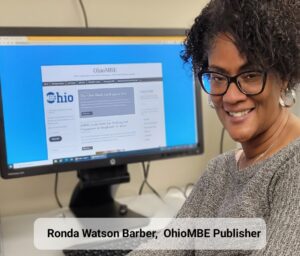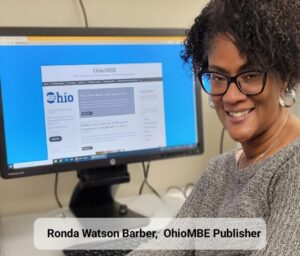
By Ronda Watson Barber
OhioMBE Publisher
In the latest board meeting, the atmosphere was electric, and not in the way one might hope. Black vendors and community members, whether they attended in person or watched the session unfold, have been left with a whirlwind of emotions and questions. The core of these concerns? The administration’s commitment to buying local, the performance of the Chief Operating Officer (COO), and the dynamics between the superintendent and the elected board.
The feedback I received through emails and texts from those who viewed or attended the session painted a vivid picture of the meeting’s atmosphere. Questions and comments flooded in: Who was orchestrating the proceedings, and who summoned him to the podium? The tone of the meeting was widely criticized as hostile, argumentative, condescending, and even chastising. Sharing in the community’s sentiment, I too felt a mix of anger, frustration, and embarrassment, especially witnessing the COO’s struggle to answer straightforward questions. Observers noted that it seemed out of place for one individual to table an issue, suggesting she might be out of her depth. Additionally, the casualness observed, such as the lack of a formal dress code and addressing individuals by their first names, sparked debates about professionalism within the board’s proceedings.
Having viewed the recorded meeting myself, it was an eye-opener, to say the least. The board’s quest for answers was met with defensiveness from the administration, highlighting a disconnect that needs urgent bridging. The incident where the COO faltered, requiring the capital improvements director to step in uninvited, only to offer what many perceived as insincere remarks, speaks volumes about the current state of operations. It begs the question: Who truly holds the reins?
Moreover, this meeting brought to light the district’s continued failure to meet its inclusion goal of allocating 20% of spending to disadvantaged businesses, with Black vendors receiving $8.9 million in contracts compared to $18.3 million awarded to white vendors. This disparity not only underscores a significant gap in equitable distribution but also casts doubt on the Chapman team’s readiness and capability to address and solve the systemic issues faced by Black vendors within the district. The real challenge lies ahead – tackling these problems head-on is a daunting task, and the recent meeting has only intensified concerns about the administration’s commitment to diversity, inclusion, and genuine engagement with the community and its vendors.
As we move forward, it’s crucial for the administration to reflect on this feedback and take actionable steps towards transparency, accountability, and genuine engagement with the community and its vendors. The path to rebuilding trust is long and arduous, but it’s a journey worth embarking on for the betterment of our local businesses and the community at large.
Stay tuned as we continue to monitor this situation closely. The commitment to supporting our local and minority-owned businesses remains unwavering, and it’s imperative that our voices are heard, respected, and acted upon. Together, we can advocate for the change we wish to see, ensuring a more inclusive and equitable environment for all.
Just my thoughts…rwb
Discover more from OhioMBE
Subscribe to get the latest posts sent to your email.
